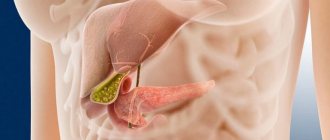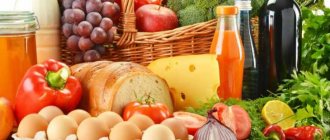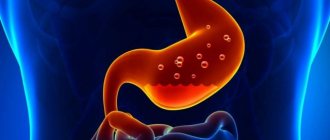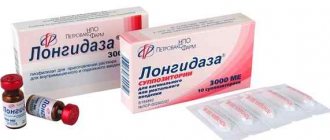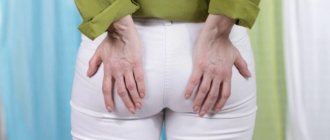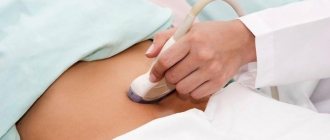Reasons to follow a diet
Healthy foods and a properly selected diet have an important impact on the health of every person - with their help you can influence ovulation, egg quality, and the positive development of the implanted embryo.
The reasons why you should follow a diet before and during the IVF protocol are a complete supply of protein, macro and microelements, and vitamins to the body, which are the key to the normal development of the fetus and the course of the entire pregnancy. A properly selected diet will improve the quality of the egg, as well as contribute to the full development of the child.
How to deal with anxiety
The two weeks after the transfer are the most painful and anxious. Try not to think about the result, enjoy your pregnancy. If the embryo transfer took place, then the attending physician is confident in your body, the good quality of the endometrium, and the embryologist is confident that the baby was viable at the time of transfer (if any deviations had been found, the transfer would have been cancelled). By the way, if PGD of the embryo is performed, the chances of a successful outcome of the protocol increase. The medical team did everything they could, and so did you. Now the process is in the hands of nature, you can only help with correct behavior and your own peace of mind.
Read your favorite book, start drawing, spend more time with your cat or dog, watch comedies with happy endings, visit a museum or theater (however, during outbreaks of disease, it is better to abandon this idea).
Do you dream about a child? We will carry out a full IVF cycle, if necessary, including genetic testing of the embryo in Krasnodar. Luck will definitely be on your side!
General nutrition tips
When following a diet before/during the IVF protocol, you should adhere to the following basic principles:
- Nutrition should be balanced. The menu should be complete and varied, with a maximum of fiber and protein foods, and a minimum of carbohydrates and fats.
- The quality of food products is also important - remove those that contain dyes and preservatives, introducing only natural, organic ones.
- Products should be comfortable for the gastrointestinal tract - after egg retrieval and embryo transfer, the digestive system may malfunction. Therefore, nausea and vomiting, dehydration and excessive gas formation may occur. A proper and balanced diet will help prevent these symptoms.
Feelings and well-being of a woman after embryo transfer
In modern reproductive medicine, one or two, much less often three, embryos are transferred into the uterine cavity. The embryos can be of different ages - from two to five days. The doctor decides how many and which embryos to transfer, based on the woman’s medical history, the results of previous IVF attempts and the quality of the embryos themselves.
As a rule, the replanting procedure is simple and painless. After the procedure, the woman is left in a horizontal position for an hour or two, although modern research suggests that there is no need for such precautions. An embryo is not a ball and cannot roll out of the uterine cavity. Next, the woman goes home to wait for the IVF result, always with a list of prescriptions and recommendations from the fertility specialist. As a rule, in the CIS countries this period of time involves the provision of sick leave: the patient does not go to work and is at home. In the West and the USA there are no such concessions. Let's go through the main list of complaints and questions that arise after the embryo transfer procedure:
- Discharge from the genital tract. As a rule, during the period of support of the luteal phase of the cycle, a woman takes progesterone preparations, many of which involve the vaginal route of administration. The main vaginal discharge will be the remains of suppositories or capsules - white or yellowish flakes. A small amount of mucus may appear. If there is excessive mucous or spotting bloody discharge, you should urgently consult your doctor to adjust the dosage of progesterone or add estrogen, etamsylate or antispasmodics.
- Temperature. Some fluctuations in body temperature are acceptable due to the hormonal load on the body. Even in many cases of physiologically proceeding independent pregnancy, women experience a low-grade fever of 37-37.3 degrees. If the temperature rises above these figures, as well as additional complaints indicating an infectious process, an urgent call to the doctor is necessary. You may need to have a blood test or include antipyretic medications in your regimen.
- Painful sensations. After intrauterine manipulation of embryo transfer, it is quite common to experience nagging pain and discomfort in the lower abdomen. This issue is discussed in advance at a doctor’s appointment. The list of recommendations usually includes magnesium preparations and antispasmodics to eliminate unpleasant symptoms.
- Bloating, diarrhea, constipation, flatulence, frequent urge to urinate. Oddly enough, this is a fairly common complaint from patients. The explanations for these processes are quite logical. The intestinal loops and bladder are closely adjacent to the uterus and ovaries in the pelvis. The ovaries and uterus, enlarged from stimulation, directly put pressure on and irritate their neighbors. The second reason for this discomfort is progesterone drugs, which have a relaxing effect not only on the wall of the uterus, but also on the intestines and bladder. Following a diet, good drinking regime and taking activated carbon slightly relieves these manifestations.
- I would like to add this popular complaint or, rather, joyful observation in a separate line. Many patients, carefully listening to themselves these days, detect “movements” or “pulsations” in the lower abdomen. Unfortunately, these sensations are not a sign of pregnancy. Displaced pelvic organs, swollen intestines and pulsation of the abdominal aorta give the patient this picture. A woman will hear real fetal movements no earlier than 17-20 weeks of pregnancy.
Nutrition after embryo transfer during IVF
In this case, you should exclude from your diet all foods that can harm the course of pregnancy, to bear a healthy child and not to the detriment of your own health. The diet and food products are selected based on the doctor’s recommendations, and most often the menu is compiled based on the following principles:
- Dishes should be easy to digest and not provoke excessive gas formation, bloating of the peritoneum and constipation.
- Actively introduce foods rich in protein, while excluding spicy and salty foods and smoked foods.
- Introduce more fruits and vegetables into your diet, drink more clean, still water. The main property of water is to cleanse the body of toxins and waste. Read more about cleansing the body with water here - https://eco-organics.ru/informatsiya-pokupatelyu/o-pitevoy-vode/ochischenie-organizma-vodoy/
Fully or partially limited products
When preparing for IVF and during its implementation, salty, smoked, spicy, fatty and fried foods should be completely excluded from the diet. It is not allowed to consume industrially produced chicken meat, canned meat and fish, which often contain antibiotics ( tetracyclines ), which facilitate their storage, but have a teratogenic effect (disturbance of embryonic development).
Fatty varieties of red meat and products made from it - semi-finished meat products, sausages, ham, sausages, as well as bacon and lard - are excluded from the diet. Legumes, cabbage, potatoes, onions, grapes, which promote fermentation processes in the intestines, as well as whole milk are excluded from vegetables and fruits. It is not recommended to eat mushrooms and any types of legumes (chickpeas, peas, beans, beans).
White bread and baked goods, pastries of any kind, confectionery, spicy and salty snacks, spices and seasonings are excluded from the diet. The consumption of salt and salty foods, refined sugar, animal fats (margarine), carbonated and caffeine-containing drinks (tea, cola, coffee, cocoa, chocolate), industrial juices, as well as products containing food additives (dyes, flavor enhancers, preservatives) is limited. ).
Table of prohibited products
| Proteins, g | Fats, g | Carbohydrates, g | Calories, kcal | |
Vegetables and greens | ||||
| vegetables legumes | 9,1 | 1,6 | 27,0 | 168 |
| sauerkraut | 1,8 | 0,1 | 4,4 | 19 |
| white radish | 1,4 | 0,0 | 4,1 | 21 |
| celery (root) | 1,3 | 0,3 | 6,5 | 32 |
| horseradish | 3,2 | 0,4 | 10,5 | 56 |
| garlic | 6,5 | 0,5 | 29,9 | 143 |
| sorrel | 1,5 | 0,3 | 2,9 | 19 |
Mushrooms | ||||
| mushrooms | 3,5 | 2,0 | 2,5 | 30 |
Nuts and dried fruits | ||||
| nuts | 15,0 | 40,0 | 20,0 | 500 |
Flour and pasta | ||||
| vareniki | 7,6 | 2,3 | 18,7 | 155 |
| dumplings | 11,9 | 12,4 | 29,0 | 275 |
Bakery products | ||||
| wheat bread | 8,1 | 1,0 | 48,8 | 242 |
Confectionery | ||||
| cookie | 7,5 | 11,8 | 74,9 | 417 |
Cakes | ||||
| cake | 4,4 | 23,4 | 45,2 | 407 |
Chocolate | ||||
| chocolate | 5,4 | 35,3 | 56,5 | 544 |
Raw materials and seasonings | ||||
| seasonings | 7,0 | 1,9 | 26,0 | 149 |
| mustard | 5,7 | 6,4 | 22,0 | 162 |
| ginger | 1,8 | 0,8 | 15,8 | 80 |
| ketchup | 1,8 | 1,0 | 22,2 | 93 |
| mayonnaise | 2,4 | 67,0 | 3,9 | 627 |
| ground black pepper | 10,4 | 3,3 | 38,7 | 251 |
| chilli | 2,0 | 0,2 | 9,5 | 40 |
| sugar | 0,0 | 0,0 | 99,7 | 398 |
Dairy | ||||
| cream 35% (fat) | 2,5 | 35,0 | 3,0 | 337 |
Cheeses and cottage cheese | ||||
| cheese | 24,1 | 29,5 | 0,3 | 363 |
Meat products | ||||
| fatty pork | 11,4 | 49,3 | 0,0 | 489 |
| salo | 2,4 | 89,0 | 0,0 | 797 |
| bacon | 23,0 | 45,0 | 0,0 | 500 |
| ham | 22,6 | 20,9 | 0,0 | 279 |
Sausages | ||||
| dry-cured sausage | 24,1 | 38,3 | 1,0 | 455 |
| smoked sausage | 9,9 | 63,2 | 0,3 | 608 |
| sausages | 10,1 | 31,6 | 1,9 | 332 |
| pork sausages | 10,1 | 31,6 | 1,9 | 332 |
Bird | ||||
| fried chicken | 26,0 | 12,0 | 0,0 | 210 |
| smoked chicken | 27,5 | 8,2 | 0,0 | 184 |
| duck | 16,5 | 61,2 | 0,0 | 346 |
| goose | 16,1 | 33,3 | 0,0 | 364 |
Fish and seafood | ||||
| smoked fish | 26,8 | 9,9 | 0,0 | 196 |
| canned fish | 17,5 | 2,0 | 0,0 | 88 |
Oils and fats | ||||
| animal fat | 0,0 | 99,7 | 0,0 | 897 |
| cooking fat | 0,0 | 99,7 | 0,0 | 897 |
| rendered pork fat | 0,0 | 99,6 | 0,0 | 896 |
Alcoholic drinks | ||||
| dry white wine | 0,1 | 0,0 | 0,6 | 66 |
| dry red wine | 0,2 | 0,0 | 0,3 | 68 |
| vodka | 0,0 | 0,0 | 0,1 | 235 |
| cognac | 0,0 | 0,0 | 0,1 | 239 |
| beer | 0,3 | 0,0 | 4,6 | 42 |
Non-alcoholic drinks | ||||
| bread kvass | 0,2 | 0,0 | 5,2 | 27 |
| cola | 0,0 | 0,0 | 10,4 | 42 |
| black tea | 20,0 | 5,1 | 6,9 | 152 |
| energy drink | 0,0 | 0,0 | 11,3 | 45 |
* data is per 100 g of product
Authorized Products
The list of permitted products is compiled by a doctor, however, the following, the most basic, can be distinguished.
- Brisket, boneless and skinless - most often chicken or turkey, baked or boiled.
- Tender beef - it can also be steamed or baked.
- Seafood and low-fat varieties of sea fish.
- Vegetable oils - sunflower or olive, flaxseed.
- Eggs and hard cheeses.
- Oatmeal, as well as plenty of greens.
All these are basic products that are complemented taking into account the individual characteristics of a woman’s body.
Features of preparation for IVF: what should be the diet and lifestyle during this period?
Nutrition plays a vital role in human life. Properly organized, it is the key to health, beauty and longevity.
But diet selection becomes especially important during illnesses or certain processes occurring in the body. IVF is one of these.
From our material you will learn about the rules of preparing for IVF, nutritional habits, lifestyle, as well as how to create the right menu, and whether you need to adhere to diets during this period.
Sample menu
When creating a diet when using the IVF protocol, you can take the following menu as a basis.
- You should start your morning with a high-calorie breakfast - porridge and a boiled egg, a sandwich with cheese and butter.
- For the first snack, you can serve fruit, fresh or in the form of a salad, baked.
- At lunchtime, be sure to include the first course, soup or borscht, meat or fish with a side dish, compote or juice.
- For a second snack, you can serve cottage cheese seasoned with nuts and honey.
- For dinner, cook boiled meat and stewed vegetables.
- 2 hours before going to bed - natural yogurt, without flavors or dyes.
When compiling a diet before applying the IVF protocol, it is important to be guided by the principle of health benefits for both the expectant mother and the expectant father, from whom the egg and sperm will be collected.
Find out about the 3 main signs of a frozen pregnancy
How to do IVF for free under a quota from the Ministry of Health, read here
Why is Dekapeptil prescribed and how to inject it: https://hochu-detey.ru/plan/medicine/gormonalnyj-preparat-dekapeptil.html
Protein diet in IVF protocol
Protein nutrition during IVF is a reasonable decision. Many people perceive this as monotony in food. But with the right approach and choice of products, an IVF diet can be very tasty, healthy and varied. So, for example, every day you can alternate the intake of both poultry and seafood, and how many different vegetables that are recommended to be consumed.
Portions should be small, but significant in terms of calories. In addition to main meals, the diet during IVF includes 2-3 more snacks. Snacks should consist of either dairy or fermented milk products; it is also possible to snack on fruit. Under no circumstances should you make “dry” snacks. A protein diet before IVF is very important not only at the preparation stage, but also during stimulation and after embryo transfer.
A protein diet for IVF is important because the protein entering the body is involved in the process of formation and growth of cells, in the formation of tissues of the future organism. It is for this reason that it is so important to follow the recommendations after IVF transplantation. But, unfortunately, a protein diet for IVF is not indicated for all women, for example, for women who have problems with the gastrointestinal tract, kidney and liver disorders, a diet with a predominance of protein is contraindicated. A protein diet can also have an unfavorable effect in women with diseases of the cardiovascular system.
When preparing for motherhood, you need to eat well enough and lead a healthy lifestyle. Few people know that the diet during IVF allows women to take specially designed nutritional cocktails. These cocktails are enriched with all the necessary substances: fats, proteins, vitamins and microelements.
One of these is a pre-prepared or homemade protein shake. In most cases, a protein shake for IVF is prescribed to pregnant women who have lactose intolerance. The factory-produced cocktail is sold dry and does not require special skills in preparation.
It can be diluted with both milk and water. Making this drink yourself will not be difficult, as long as it contains: liquid in the form of milk, water, kefir, protein from cottage cheese or eggs, carbohydrates in the form of honey, jam, and fresh fruit. It is important that this cocktail also brings benefits after childbirth, improving lactation.
Protein diet for IVF - the menu looks something like this:
- Every morning should start with a high-calorie breakfast. Breakfast may consist of porridge, boiled eggs, bread with butter and cheese.
- first snack. It is recommended to eat fruit, possibly in the form of a salad.
- Lunch must begin with the first course, followed by meat or fish in any form, fried is not recommended.
- the second snack could be cottage cheese with honey and nuts.
- dinner consists of meat and stewed vegetables.
- two hours before bedtime, you can drink natural yogurt with added fruit. During the day, if you feel hungry, you can drink milk and eat some walnuts.
Nutrition after IVF puncture requires you to stop eating foods that lead to gas formation. During this period, you should not add legumes, rye flour bread, or yeast baked goods to your diet. All these foods cause fermentation and bloating. And as you know, such symptoms are inherent after the use of hormonal drugs to stimulate ovulation, that is, the above products only intensify these manifestations.
During preparation for IVF, nutrition should be correct and balanced not only for the woman, but also for the man. Protein is important in a man’s body, as it takes part in spermatogenesis, the formation of high-quality sperm.
As in a normal pregnancy, nutrition during an IVF protocol has a great influence on the development of the child. Therefore, a woman should have proper healthy nutrition not only during stimulation of ovulation and while waiting for pregnancy tests.
It is very important not to relax even later, when the analysis is done and the goal seems to have been achieved. Of course, a woman needs a special diet during this period. But what is very important: you need to start eating right long before the start of the protocol, about three months.
So, we start by eating complete proteins. After all, without proteins, vitamins, minerals, fats and carbohydrates are absorbed worse, proteins are important in the process of egg formation, proteins help strengthen the immune system and increase resistance to infections. You don't want to get sick during the protocol, do you? So, proteins.
It is very difficult to find quality meat now, especially in urban areas, but you will have to work hard. It’s better to go to a legal market in the morning and buy a chicken (not a broiler), a turkey or a rabbit from your grandmother. Of course, there is no guarantee that she did not feed the animals with compound feed, but there is still a possibility of this.
Seafood is very healthy. Add a lot of herbs, cheese, and eggs to the whites. By the way, oatmeal also contains a lot of protein, so you can use it as a side dish. A protein diet has one unnecessary negative point: a high protein content in food usually causes constipation and heaviness in the stomach.
Vegetables, fiber and plain water help here. You need to drink in small portions (about half a glass) but very often. At least once an hour. But be sure to drink not compotes, but clean water.
Under no circumstances should you drink carbonated drinks or, worse, those with sugar and dyes. Store-bought juices, by the way, are very often just called juices. Read the composition of the drink carefully. You need to eat not 3 times a day as before, but a little more often.
It is better to divide food into small portions and eat 6-7 times a day.
1. Mushrooms are heavy proteins. They are slowly absorbed. And they provide unnecessary stress to the body. But we don’t need this now. 2. Vegetables and fruits that worsen the intestinal microflora (cabbage, potatoes, corn) 3. Foods containing a lot of carbohydrates (grapes, some citrus fruits)
4.Soda (juices, drinks, mineral water). They contain anions and cations that can cause bloating and stomach cramps.
5. Industrial chickens - contain a large amount of hormones, which are added to their food at poultry farms for rapid growth. This negatively affects a woman's hormonal balance.
Food directly during the protocol
The principles are the same, but we drink a lot of water. It removes toxins from the body during times of heavy hormonal load. In addition, water helps prevent ovarian hyperstimulation syndrome or reduce its severity. The amount of salt consumed should be reduced so that water is not retained in the body. You need to drink two to three liters daily.
After a puncture, women often complain of bloating and constipation. Nausea is common.
Therefore, in order not to aggravate it, it is important at this time to completely exclude from the diet foods that cause fermentation and gas formation in the intestines. These are carbonated drinks, cabbage, corn, grapes, milk, baked goods, raw onions.
During the periods of stimulation, puncture and embryo transfer, do not forget to drink plenty of plain water. In addition to your protein diet, eat vegetables and fruits.
If the test shows pregnancy
We rejoice quietly and continue our diet based on the principles of healthy eating. The most important products that supply protein are chicken, turkey, rabbit, beef; sources of protein and vitamins for the reproductive system are fish and seafood.
They also contain Omega-3 fatty acids, which reduce the risk of cardiovascular complications. Eggs, chicken or quail, are required in the diet. They are rich in proteins, microelements, and vitamins.
But attention: to prevent intestinal infections, long-term heat treatment is required.
Don't forget about dairy products. These are all hard cheeses, cottage cheese, sour cream, yogurt without additives. They are an essential source of protein and calcium. We eat vegetables and greens. They are simply a storehouse of folic acid, which is needed for the development of pregnancy and the prevention of congenital malformations of the child.
Fruits improve peristalsis, dried fruits and nuts are a source of vitamin E. This vitamin is the main vitamin for women's health. It regulates many complex processes in the reproductive sphere. You can add corn, olive, and flaxseed oil to salads. Vegetable oils reduce the risk of thrombosis and protect body cells from death.
We eat whole grain bread. It contains vitamins and fiber and helps intestinal function. We fight increased gas formation with garlic and ginger. We drink freshly squeezed juices. They contain antioxidants, strengthen the walls of blood vessels and the general immunity of the pregnant woman’s body.
Sausages, pickles and semi-finished meat products. The dyes in their composition cause oxygen starvation or even death of body cells and have mutagenic properties. And we don’t need this during the period of embryonic growth.
We limit mushrooms due to the severity of digestion and salt along with salty snacks to avoid swelling. It is undesirable to drink fruit drinks, juices, and industrial drinks, as they are full of dyes, preservatives and sugar.
Coffee and all types of tea are contraindicated during pregnancy as they contain caffeine.
Rules of conduct in the first days
After transferring the embryo, the first day should be spent in the most gentle and bed rest mode. It is necessary to postpone all important matters, meetings, events. Further, the daily routine after embryo transfer may begin to change closer to half-bed (move around if necessary, avoid long journeys).
Already after 4-5 days you can return to a more or less normal daily routine.
In general, your lifestyle doesn't have to change dramatically. We must do so that he becomes measured and calm. Tireless walks in the fresh air, avoidance of stressful situations, adequate sleep, properly selected nutrition - these are its main points.
What should you not do after embryo transfer?
You can't have sex, or at least try to minimize it. It is prohibited to take hot baths or visit saunas. It is necessary to limit physical activity; lifting heavy objects is prohibited. However, it is not recommended to lie completely in bed for the first few days. This interferes with proper blood flow, which in turn can reduce the flow of oxygen to the uterus and embryo.
What's going on inside
The process of implantation of the embryo proceeds quite quickly, up to 5 minutes, and does not cause any serious discomfort. After it, for the first 14 days, little changes in appearance.
Inside the body, the embryo after transfer provokes unique reactions in the body:
- biochemical - the hormone hCG is produced;
- biophysical – the emergence, development and division of cells;
- trophic – the embryo learns to feed on substances from the mother’s blood;
- embryonic tissues are formed.
What does the embryo do after transfer?
After implantation into the uterine cavity, the embryo begins to actively grow and develop. Upon reaching the blastocyst stage (if 2-3 day old embryos were transplanted) and gluing it out of the membrane, attachment to the walls of the uterus begins to occur. On average 3-4 days after transplantation.
If blastocysts (5-day-old embryos) have already been transplanted, then attachment to the uterus begins on day 2-3. Next, every day there is a process of consolidation and deepening of the embryo into the endometrium.
A week after the procedure, the morula (new stage of the embryo) should be completely attached to the walls. The process of producing hCG begins. By the end of the two-week period, the hormone level reaches the level by which pregnancy can be diagnosed.

